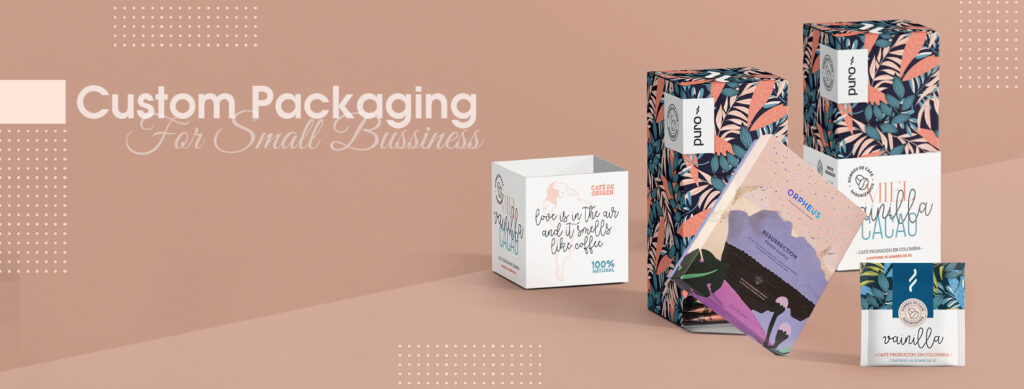Starting a packaging company can be an extremely profitable business venture, but it is not without its challenges. If you want to start a company that makes custom product box, there are a few things you need to do. It’s important to have a plan and know what you will need. In this article, we will discuss the most important things you need to know before starting your own packaging company.
Step 1: Choose a Business Structure
The first step in starting a packaging company is to choose a business structure. There are several different business structures you can choose from, including sole proprietorship, partnership, limited liability company (LLC), and corporation. There are three different structures that you can choose from. They each have their own advantages and disadvantages, so you need to think about which one is best for your business.
Step 2: Register Your Business
Once you have chosen a business structure, you must register your business with the appropriate government agency. This process will vary depending on how your business is set up. You should find out from your state or local government how you need to do it.
Step 3: Get Business Licenses and Permits
To legally operate your package company, you will need to get different licenses and permits from the government. The requirements for these licenses and permits vary by location, so check with your local officials to see what they require for this.
Step 4: Purchase Insurance
Packaging companies can be susceptible to lawsuits and accidents, leading to costly legal fees and overwhelming medical bills. You should purchase general liability insurance (GLI) for your packaging company to protect yourself from these expenses. GLI covers accidents that occur at work or on your property, protecting you against damages and legal fees.
Step 5: Purchase Packaging Equipment
Your custom packaging company will need to invest in the machinery and equipment necessary to run the business smoothly. Therefore, you will need to decide how much money to spend on the equipment for your company. You might spend more money depending on what you do. If you have a lower production volume but want state-of-the-art machines, it might be worth spending more money on the top-of-line machines.
Another important factor to consider when buying equipment is the operating costs, such as maintenance and energy usage. For example, large volume production requires high-speed machines that use more electricity than smaller ones. If you have a small business, it might be worth buying old machinery. That way it will cost less to operate and maintain.
Step 6: Make Your Venture Legal
You must obtain all necessary licenses and permits before starting your business. Different jurisdictions have different requirements for setting up a company. However, most require that you file articles of incorporation with your Secretary of State or another corporation’s office when you form a corporation. This step will allow you to get an EIN, which is required for opening a bank account and getting credit cards.
Step 7: Make Your Product Legal
Next, you must obtain all necessary permits and licenses for your packaging products. There are occupational safety regulations to follow as well as environmental regulations. For example, some regulations govern the use of certain hazardous substances in your product or packaging design.
Step 8: Research the Market Niche
You should market research your intended customer segment before investing much time and money into production. Some companies invest millions of dollars before determining if their idea would sell. By researching potential markets, you could save yourself a lot of time and money! There are many tools on the internet that you can use to help decide if your product would be successful. There are also many free tools. Many trade associations can tell you about trends in the industry. You can learn about the competition, too.
Once you know what you want your product to look like, it is important to research the type of package that would be best.
Step 9: Determine Product Packaging Requirements
Determine if your product falls into any regulatory categories that may require special packaging considerations. For example, many products that contain chemicals or flammable material must meet specific packaging requirements to be transported by air. The Department of Transportation (DOT) and the International Air Transport Association (IATA) are government agencies. They tell people how to package products for transportation. They have information on their websites about these requirements.
If you are unsure about any specific packaging requirements, it is always best to consult with an expert. If you have a product, the team at Diversified can help you figure out if it is regulated. Then they can guide your packaging. Once you know what package works best for your product, make prototypes and show them to people.
Step 10: Develop Product Prototypes and Test with Consumers
It’s important to get the opinion of consumers on your custom boxes design BEFORE you make it. You want to make sure that they think it is appealing and functional, not just you. Prototypes can be created with a variety of materials and manufacturing processes. Once you have a few viable prototypes, test them with potential customers to get their feedback.
Step 11: Finalize the Package Design
After incorporating feedback from consumers, it’s time to finalize the package design. This will include detailed drawings and specifications that can be used by the manufacturer to produce the package. It’s important to have a well-defined design, so there are no surprises during production.
Step 12: Produce Packages for Market Delivery
Assuming everything goes smoothly with the prototype development and consumer testing, it’s time to produce packages for market delivery. Production will require a signed purchase order from the customer and detailed drawings from your engineering team.
The supplier will use the drawings to create a mold for the package and then produce the injection-molded parts. Assembly of the finished product will also require adhesives, labels, and other finishing touches.
It’s important to quality test each package before it leaves the factory. This can include making sure that the product arrives at the customer without breaking. We test to make sure it is unbroken.
Launch Packaging Company
Now that you have a great product and an efficient way to make it, it is time to start your Packaging Company. Start by building a website and marketing materials to promote your products. You can also start attending trade shows in your industry to get in front of potential customers.
As a new packaging company, it may be difficult to break into the market. However, you can set yourself apart from other stores by focusing on quality and customer service. Good luck!



